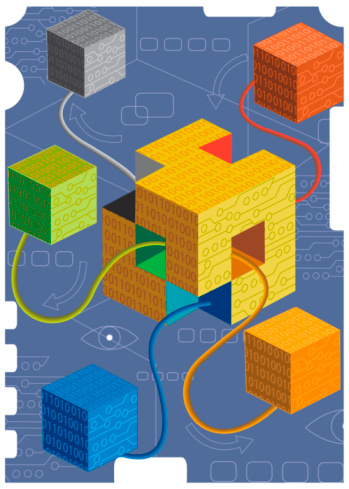February 16, 2024- Yotta is offering, to qualified partners, a six-month evaluation-period, with support, for its SEMI P39-0416 OASIS Reader/Writer Source Code.
Updates as of Fevruary 16, 2024:
- full support for 64-bit Windows and 64-bit ARM V8 CPUs running Linux
- much faster error/warning reports for suboptimal OASIS files
- efficiency improvements to single-cell reader interface
The SEMI OASIS P39 layout data file format offers many advantages to tools that can use it, but its complexity can be daunting to tool vendors and users alike. A full OASIS reader/writer package requires significantly more code (140,000 lines) than a GDSII reader/writer (6,000 lines). Developers who skip some portions of the specification risk getting bloated files or bad data.
The Yotta Data Sciences OASIS data file source code package is a complete, powerful, and robust development framework for EDA developers wanting an easy way to add OASIS input and output to their tools. Use of the package requires very little knowledge of OASIS data concepts and no knowledge of the dark corners of the OASIS specification.
The OASIS data file format offers huge improvements in disk usage (10-50x) and thus processing speed, but its specification is large, complex, and sometimes incomplete. Some OASIS features are implicitly but tightly linked with other features and thus can be used only in very constrained form. Keeping track of all of these things is not cost-effective for most EDA developers, meaning there is a need for a robust OASIS reading and writing capability.
The Yotta Data Sciences OASIS source provides a simple Applications Programming Interface (API) to EDA developers who just want to get the job done. Cells and cell references have all name information filled in - no need to maintain name-and-number maps. Polygon and path data comes from the reader with nearly all OASIS complexity hidden. Only properties, which differ from GDSII definitions, are passed as-is to reader applications. Even then, data from GDSII-compatible properties can be extracted in a single API call.
For expert users, the full power of the OASIS format is available. One level down from the simplified API is a level that provides full visibility into OASIS file constructs. All mapping tables are available for reference, and it is possible to analyze exactly what is in a file when it becomes necessary to debug incoming OASIS data. A straightforward record-reading loop, which can be copied from the API implementation, is all that is needed.
SEMI P39 OASIS SOURCE CODE
Request more Information
"The Company's technology established a common expectation amongst suppliers and customers regarding matters of OASIS compliance, performance and interoperability"
Naoya Hayashi
Electronic Device Laboratory
Dai Nippon Printing Co., Ltd
typedef struct_oasisReaderPolygon {
oasisUInt layer,dataType;
rawPointList *ptList
oasisPropertyList *propList;
} oasisReaderPolygon;
OAS = OASIS
GDS = GDSII
Workflow Auditor Point Tools
®
TM
®
© Getty Images
NEW at Yotta Data Sciences
* US Patents 9,122,825, 8,555,219, 8,266,571 and 7,685,545.
International Patents: China 200980129771.8, Japan 4768896, Korea 10-1580258, Israel 209907, European Patent 2310967.
OASIS® is a Registered Trademark of Thomas Grebinski
© 2008-2024 Yotta Data Sciences, Inc. All rights reserved.
February 16, 2024- Yotta is offering, to qualified partners, a six-month evaluation-period, with support, for its SEMI P39-0416 OASIS Reader/Writer Source Code.
Visit Page: OAS Reader/Writer
Visit Page: OAS Source Code




